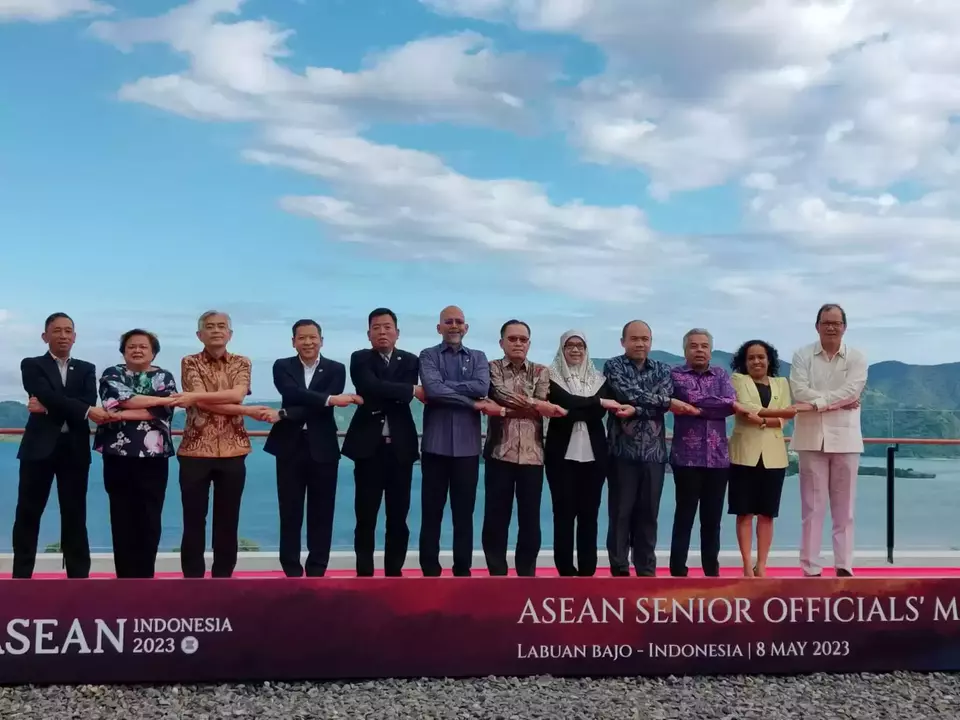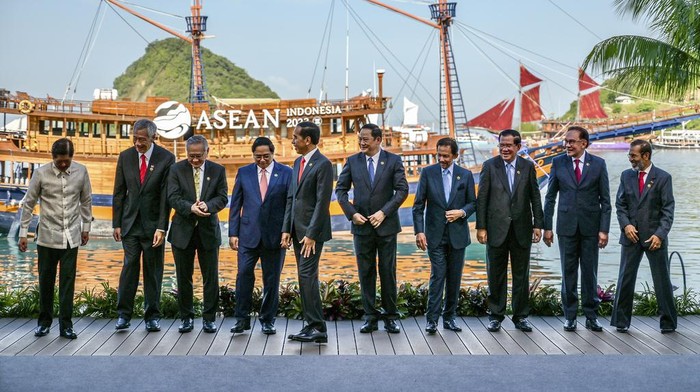
LABUAN BAJO, East Nusa Tenggara (10-11 May 2023) – The US dollar has dominated the global economy since the aftermath of World War II, maintaining its position as the most-held reserve (not to mention the most widely used currency) in international transactions today. In recent years, the trend of de-dollarisation, i.e. the reduced reliance on the US dollar as the currency utilized for trade and other international interactions, has emerged as a means to wean out dependency on the US.
Countries such as India, Brazil, China, and Japan have de-dollarized relatively peacefully, while others (particularly in Latin America) have illustrated a contrastingly dim tale of the difficulties derived from such processes. During the 42nd ASEAN Summit last month held in Labuan Bajo, ASEAN members reinforced their ambitions to better regional payment connectivity, signing an agreement to push for the use of local currency transactions (LCT) in an endeavor to bring collective economic benefits for all ASEAN nations. While many see it as a refreshing change, others view it as the start of a new unhealthy reliance on the Chinese Yuan for their economies.

Prior to the summit, Indonesia was expected to use its ASEAN chairmanship status to promote its de-dollarisation ambitions after the state had already begun trading in local currencies with a host of other countries including China, South Korea, Japan, Malaysia, and Thailand. The ambition also follows the recent implementation of improved regional payment systems between the central banks of the Philippines, Malaysia, Singapore, Thailand, and Indonesia, paving the way for a contactless quick response (QR) payment system for transactions between the countries. During the summit, ASEAN leaders affirmed the benefits of participating in cross-border transactions in local currencies, agreeing to consider the development of the ASEAN Local Currency Transaction Framework as a task force. Leaders of the summit have expressed their enthusiasm for the declaration, especially in strengthening financial resilience and allowing for deeper financial integration which would improve and encourage further intra-ASEAN trade and investments in the region.
Talks of de-dollarisation are not new as more countries are looking at the appealing alternative, especially following the US’ increasing debt ceiling, the economic collapses of the Asian Financial Crisis and Global Financial Crisis, and the US-China rivalry. The most recent trigger that sparked revitalized talks appears to be the US$300-billion sanction on Russian foreign reserves and cuts to banking networks following the Russian invasion of Ukraine. These events have left ASEAN member states wary of the potential weaponization of the dollar and resultant risks deriving from an inability to diversify reserve currencies.

As China upholds its position as ASEAN’s largest trading partner since 2009, the diminishing role of the US dollar appears to have potential perks for China’s agenda for the wider adoption of the Chinese Yuan in trade and investments. However, for now, the main priority appears to be on advancing international transactions in local currencies for the region.
Without a crystal ball, it’s difficult to predict the true results of the declaration. Some consider de-dollarisation as a necessary change against a Western-dominated system aimed at creating opportunities for the middle powers. Meanwhile, others fear it will redirect a sense of dependency on the Chinese Yuan. Despite the increasing de-dollarisation trend, the US dollar continues to be the dominant medium of exchange. But in the coming decades, its primacy may eventually fall.